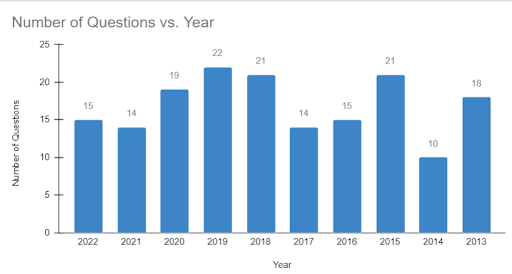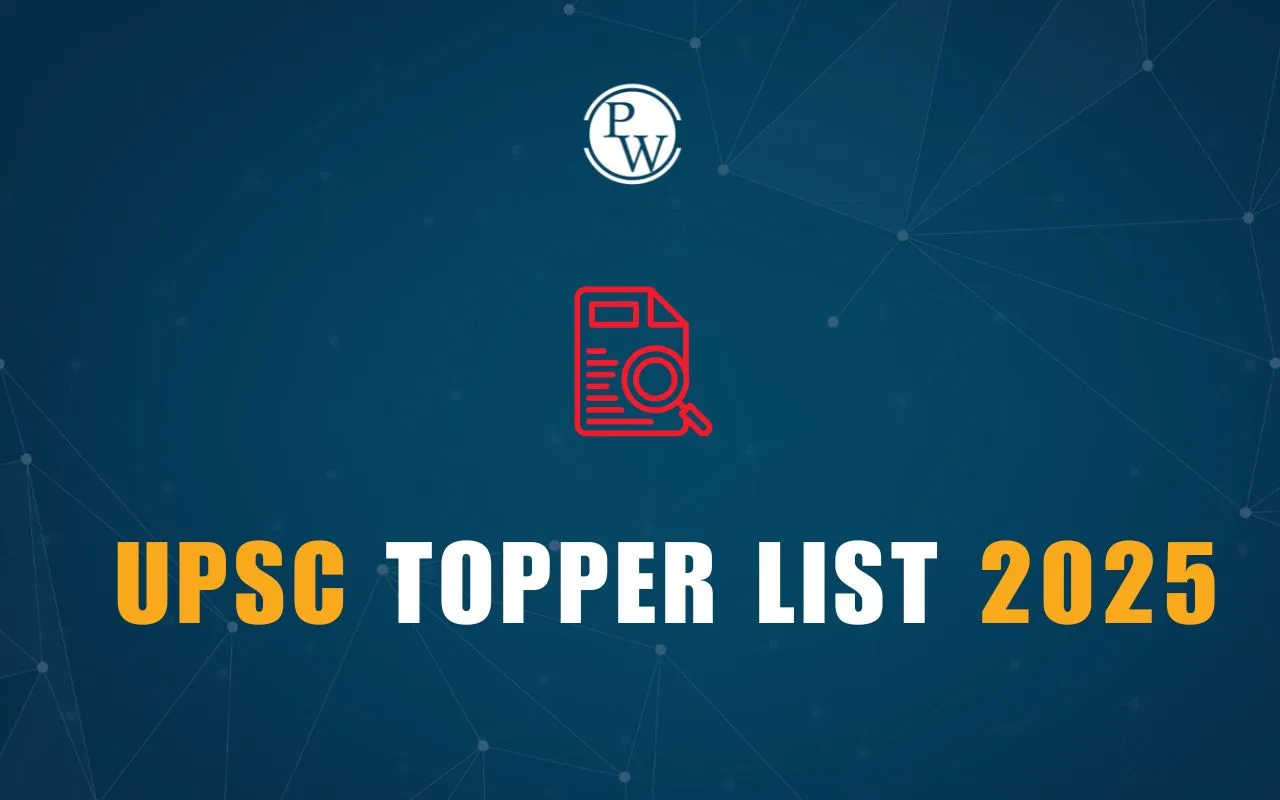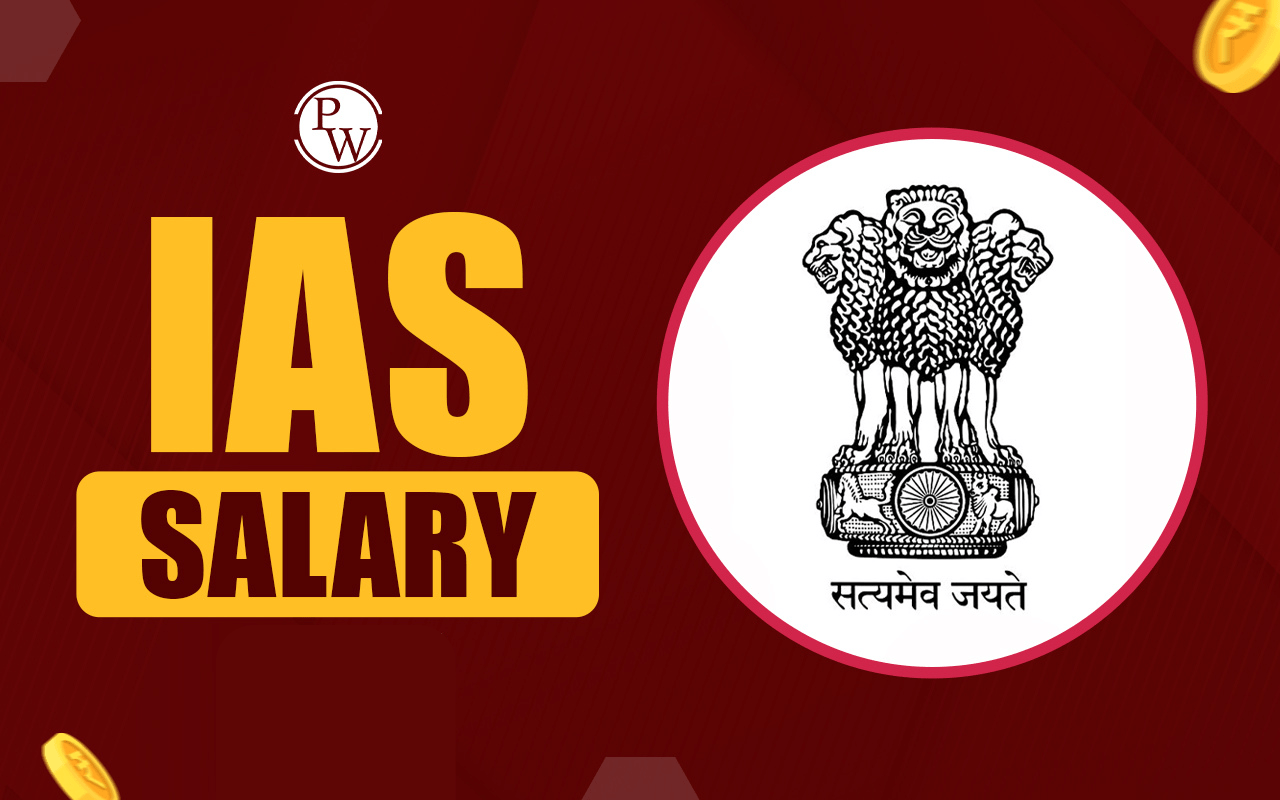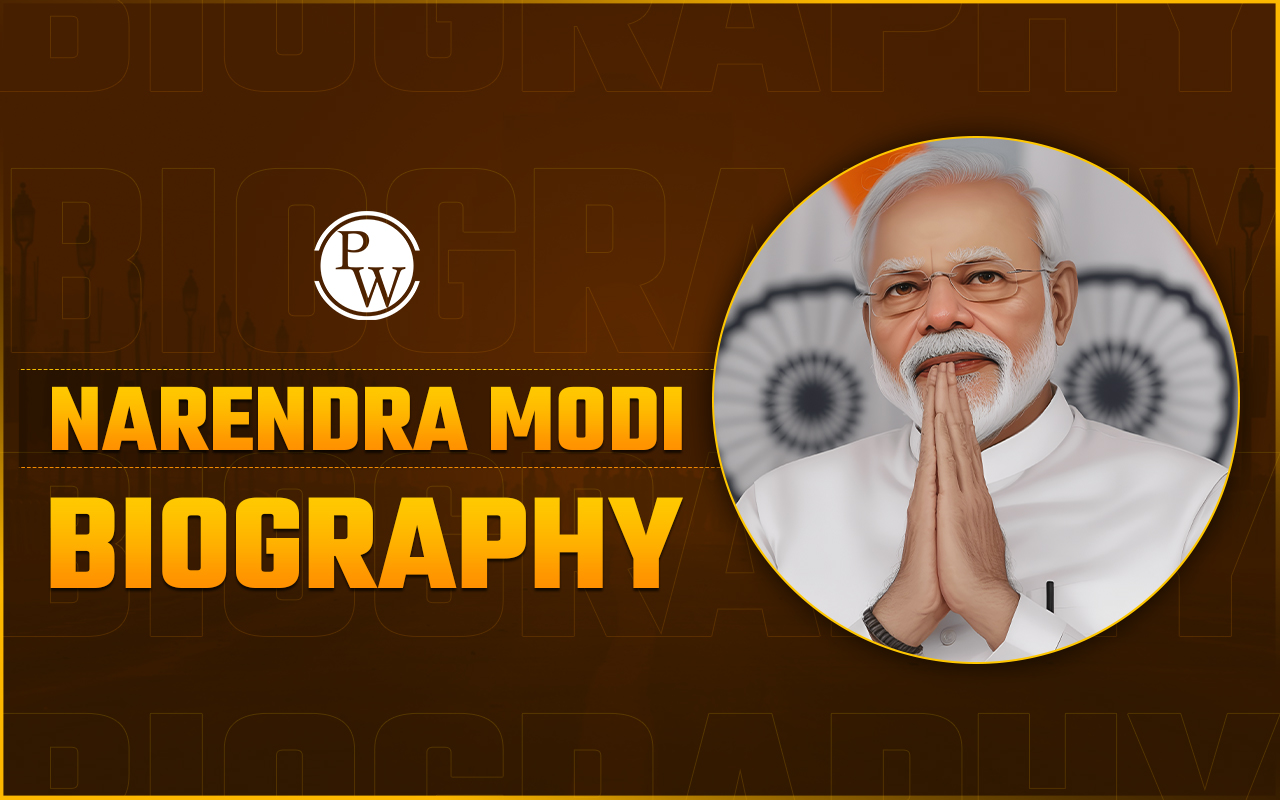
UPSC Prelims Economy Questions: The UPSC Civil Services Preliminary exam was conducted on May 25, 2025. The UPSC GS Paper 1 consisted of a total of 100 questions across various sections. In UPSC Prelims 2025, the Economics section covers a significant weightage with 14 questions from fundamental concepts, trends in the Indian economy, RBI, and the budget.
We have compiled the list of UPSC Prelims Economy Questions 2025 along with last year's questions to gauge your preparation for the upcoming examination.
UPSC Prelims Economy Questions 2025 No of Questions & Analysis
The UPSC Prelims Economy section included 14 questions from a variety of topics like Public Finance, RBI, Agriculture, Circular Economy, Finance, Revenue, Budget, Investment Banks, Banking, etc.
This section aims to test in-depth conceptual knowledge and recent trends in economics. Candidates must be familiar with the questions to gain insights into the key topics often asked in the examination.
On analyzing last year's trends, 15 questions were asked in the 2024 exam, and 14 questions in the 2023 exam. According to the UPSC Prelims Exam Analysis 2025 by Physics Wallah, the difficulty level for Economics questions is determined to be easy to moderate.
Check: UPSC Question Paper 2025
UPSC Prelims Economy Questions 2025 in Text Format
The UPSC Prelims Exam 2025 had a total of 14 questions from Economics, including concept-based and calculation-based topics. Here is the list of questions with their answers:
1. With reference to investments, consider the following:
(a) Bonds
(b) Hedge Funds
(c) Stocks
(d) Venture Capital
How many of the above are treated as Alternative Investment Funds?
(a) Only one
(b) Only two
(c) Only three
(d) All the four
2. Which of the following are the sources of income for the Reserve Bank of India?
I. Buying and selling Government bonds
II. Buying and selling foreign currency
III. Pension fund management
IV. Lending to private companies
V. Printing and distributing currency notes
Select the correct answer using the code given below.
(a) I and II only
(b) II, III and IV
(c) I, III, IV and V
(d), II and V
3. Consider the following statements:
I. The Reserve Bank of India mandates all the listed companies in India to submit a Business Responsibility and Sustainability Report (BRSR).
II. In India, a company submitting a BRSR makes disclosures in the report that are largely non-financial in nature.
Which of the statements given above is/are correct?
(a) I only
(b) II only
(c) Both I and II
(d) Neither I nor II
4. Consider the following statements:
Statement I: In India, income from allied agricultural activities like poultry farming and wool rearing in rural areas is exempted from any tax.
Statement II: In India, rural agricultural land is not considered a capital asset under the provisions of the Income-tax Act, 1961.
Which one of the following is correct in respect of the above statements?
(a) Both Statement I and Statement II are correct and Statement II explains Statement I
(b) Both Statement I and Statement II are correct but Statement II does not explain Statement I
(c) Statement I is correct Statement II is not correct but
(d) Statement I is not correct but Statement II is correct
5. Consider the following statements:
Statement I: As regards returns from an investment in a company, generally, bondholders are considered to be relatively at lower risk than stockholders.
Statement II: Bondholders are lenders to a company whereas stockholders are its owners.
Statement III: For repayment purpose, bondholders are prioritized over stockholders by a company.
Which one of the following is correct in respect of the above statements?
(a) Both Statement II and Statement III are correct and both of them explain Statement I
(b) Both Statement I and Statement II are correct and Statement I explains Statement II
(c) Only one of the Statements II and III is correct and that explains Statement I
(d) Neither Statement II nor Statement III is correct
6. Consider the following statements:
I. India accounts for a very large portion of all equity option contracts traded globally thus exhibiting a great boom.
II. India's stock market has grown rapidly in the recent past even overtaking Hong Kong's at some point of time.
III. There is no regulatory body either to warn the small investors about the risks of options trading or to act on unregistered financial advisors in this regard.
Which of the statements given above are correct?
(a) I and Il only
(b) II and III only
(c) I and III only
(d) I, II and III
7. Consider the following statements:
Statement I: Circular economy reduces the emissions of greenhouse gases.
Statement II: Circular economy reduces the use of raw materials as inputs.
Statement III: Circular economy reduces wastage in the production process.
Which one of the following is correct in respect of the above statements?
(a) Both Statement II and Statement III are correct and both of them explain Statement I
(b) Both Statement II and Statement III are correct but only one of them explains Statement I
(c) Only one of the Statements II and III is correct and that explains Statement I
(d) Neither Statement II nor Statement III is correct
8. Consider the following statements:
I. Capital receipts create a liability or cause a reduction in the assets of the Government.
II.Borrowings and disinvestment are capital receipts.
III.Interest received on loans creates a liability of the Government.
Which of the statements given above are correct?
(a)I and II only
(b) II and III only
(c) I and III only
(d) I, II and III
9. Suppose the revenue expenditure is 80,000 crores and the revenue receipts of the Government are 60,000 crores. The Government budget also shows borrowings of 10,000 crores and interest payments of 6,000 crores. Which of the following statements are correct?
I. Revenue deficit is 20,000 crores.
II. Fiscal deficit is 10,000 crores.
III. Primary deficit is 4,000 crores.
Select the correct answer using the code given below.
(a) I and II only
(b) II and III only
(c) I and III only
(d) I, II and III
10. A country's fiscal deficit stands at 50,000 crores. It is receiving 10,000 crores through non-debt creating capital receipts. The country's interest liabilities are 1,500 crores. What is the gross primary deficit?
(a) 48,500 crores
(b) 51,500 crores
(c) 58,500 crores
(d) None of the above
11. Consider the following statements in respect of the International Bank for Reconstruction and Development (IBRD):
I. It provides loans and guarantees to middle income countries.
II. It works single-handedly to help developing countries to reduce poverty.
III. It was established to help Europe rebuild after World War II.
Which of the statements given above are correct?
(a) I and II only
(b) II and III only
(c) I and III only
(d) I, II and III
12. Consider the following statements in respect of RTGS and NEFT:
I. In RTGS, the settlement time is instantaneous while in case of NEFT, it takes some time to settle payments.
II. In RTGS, the customer is charged for inward transactions while that is not the case for NEFT.
III. Operating hours for RTGS are restricted on certain days while this is not true for NEFT.
Which of the statements given above is/are correct?
(a) I only
(b) I and II
(b) I and III
(d) III only
13. Consider the following countries:
I. United Arab Emirates
II. France
III. Germany
IV. Singapore
V. Bangladesh
How many countries amongst the above are there other than India where international merchant payments are accepted under UPI?
(a) Only two
(b) Only three
(c) Only four
(d) All the five
14. Which of the following statements with regard to recommendations of the 15th Finance Commission of India are correct?
I. It has recommended grants of `4,800 crores from the year 2022-23 to the year 2025-26 for incentivizing States to enhance educational outcomes.
II. 45% of the net proceeds of Union taxes are to be shared with States.
III. `45,000 crores are to be kept as performance-based incentive for all States for carrying out agricultural reforms.
IV. It reintroduced tax effort criteria to reward fiscal performance.
Select the correct answer using the code given below.
(a) I, II and III
(b) I, II and IV
(c) I, III and IV
(d) II, III and IV
Check: UPSC Prelims Answer Key 2025
UPSC Prelims Economy PYQs with Answers
By studying previous years' Economy questions and their answers, you can familiarize yourself with key topics, sharpen your analytical skills, and enhance your overall preparation. This targeted approach will not only boost your confidence but also improve your chances of scoring well in this important section.| UPSC Prelims Economy Questions with Answers | |
| Title | Link |
| Economy Questions with Answers | UPSC Prelims Economy PYQs |
| Other Subject Questions in UPSC Prelims | UPSC Prelims PYQs |
UPSC Prelims Economy Questions 2024
The UPSC Prelims 2024 had 15 Economics questions that were mostly conceptual and awareness-based. This year banking operation section dominated the Economy section. Here are questions from the UPSC 2024 Prelims GS question paper with unofficial answers:Que: Consider the following statements:
Statement-I: If the United States of America (USA) were to default on its debt, holders of US Treasury Bonds will not be able to exercise their claims to receive payment.
Statement-II: The USA Government debt is not backed by any hard assets, but only by the faith of the Government.
Which one of the following is correct in respect of the above statements?
(a) Both Statement-I and Statement-II are correct, and Statement-II explains Statement-I.
(b) Both Statement-I and Statement-II are correct, but Statement-II does not explain Statement-I.
(c) Statement I is correct, but Statement II is incorrect.
(d) Statement I is incorrect, but Statement II is correct.
Que: Consider the following statements:
Statement-I: Syndicated lending spreads the risk of borrower default across multiple lenders.
Statement-II: The syndicated loan can be a fixed amount/lump sum of funds, but cannot be a credit line.
Which one of the following is correct in respect of the above statements?
(a) Both Statement-I and Statement-II are correct, and Statement-II explains Statement-I.
(b) Both Statement-I and Statement-II are correct, but Statement-II does not explain Statement-I.
(c) Statement-I is correct, but Statement II is incorrect.
(d) Statement-I is incorrect, but Statement-II is correct.
Que: Consider the following statements in respect of the digital rupee:
- It is a sovereign currency issued by the Reserve Bank of India (RBI) in alignment with its monetary policy.
- It appears as a liability on the RBI's balance sheet.
- It is insured against inflation by its very design.
- It is freely convertible against commercial bank money and cash.
(d) 1, 2 and 4
Que: With reference to the Digital India Land Records Modernisation Programme, consider the following statements:
- To implement the scheme, the Central Government provides 100% funding.
- Under the Scheme, Cadastral Maps are digitised.
- An initiative has been undertaken to transliterate the Records of Rights from local language to any of the languages recognized by the Constitution of India.
Which of the statements given above are correct?
(a) 1 and 2 only
(b) 2 and 3 only
(c) 1 and 3 only
(d) 1, 2, and 3
Que: Consider the following statements:
- In India, Non-Banking Financial Companies can access the Liquidity Adjustment Facility window of the Reserve Bank of India.
- In India, Foreign Institutional Investors can hold the Government Securities (G-Secs).
- In India, Stock Exchanges can offer Separate trading platforms for debts.
(c) 1, 2 and 3
(d) 2 and 3 onlyQue: In India, which of the following can trade in Corporate Bonds and Government Securities?
- Insurance Companies
- Pension Funds
- Retail Investors
(d) 1, 2 and 3
Que: Consider the following:- Exchange-Traded Funds (ETF)
- Motor vehicles
- Currency swap
(b) 2 and 3 only
(c) 1, 2, and 3
(d) 1 and 3 only
Que: With reference to the sectors of the Indian economy, consider the following pairs:| Sl. No. | Economic activity | Sector |
| 1. | Storage of agricultural produce | Secondary |
| 2. | Dairy farm | Primary |
| 3. | Mineral exploration | Tertiary |
| 4. | Weaving cloth | Secondary |
(b) Only two
(c) Only three- Agricultural residues
- Corn grain
- Wastewater treatment sludge
- Wood mill waste
(c) 1, 2, 3 and 4
(d) 1, 3, and 4 onlyQue: With reference to physical capital in Indian economy, consider the following pairs:
| Sl. No. | Items | Category |
| 1. | Farmer’s plough | Working capital |
| 2. | Computer | Fixed capital |
| 3. | Yarn used by the weaver | Fixed capital |
| 4. | Petrol | Working capital |
(b) Only two
(c) Only threeQue: With reference to the rule/rules imposed by the Reserve Bank of India while treating foreign banks, consider the following statements:
- There is no minimum capital requirement for wholly owned banking subsidiaries in India.
- For wholly owned banking subsidiaries in India, at least 50% of the board members should be Indian nationals.
(b) 2 only
(c) Both 1 and 2Que: With reference to Corporate Social Responsibility (CSR) rules in India, consider the following statements:
- CSR rules specify that expenditures that benefit the company directly or its employees will not be considered as CSR activities.
- CSR rules do not specify minimum spending on CSR activities.
(a) 1 only
(b) 2 onlyQue: With reference to the Indian economy,
“Collateral Borrowing and Lending Obligations” are the instruments of:(c) Money market
(d) Stock marketUPSC Prelims Economy Questions 2023
In the UPSC Prelims 2023 exam, around 14 questions could be directly associated with Economics. The UPSC Prelims Economy questions focused on testing the conceptual clarity and analytical skills of candidates. Go through the previous year’s UPSC Prelims Economy questions and cover the syllabus accordingly from NCERTs, Indian budget, Economy Survey, and reference material:
Question 1: Consider the following statements:
Statement I: Interest income from the deposits in Infrastructure Investment Trusts (InvITs) distributed to their investors is exempted from tax, but the dividend is taxable.
Statement II: InvITs are recognized as borrowers under the 'Securitization and Reconstruction of Financial Assets and Enforcement of Security Interest Act, 2002'.
Which one of the following is correct in respect of the above statements?
(a) Both Statement I and Statement II are correct and Statement II is the correct explanation for Statement I
(b) Both Statement-I and Statement-II are correct and Statement-II is not the correct explanation for Statement I
(c) Statement I is correct but Statement II is incorrect
(d) Statement-I is incorrect, Statement-II is correct
Also Read: UPSC Prelims Economy Syllabus
Question 2: Consider the following statements:
Statement I: In the post-pandemic recent past, many Central Banks worldwide had carried out interest rate hikes.
Statement II: Central Banks generally assume that they have the ability to counteract the rising consumer prices via monetary policy means.
Which one of the following is correct in respect of the above statements?
(a) Both Statement I and Statement II are correct and Statement II is the correct explanation for Statement I
(b) Both Statement I and Statement II are correct and Statement II is not the correct explanation for Statement I
(c) Statement I is correct but Statement II is incorrect
(d) Statement I is incorrect but Statement II is correct
Question 3: Consider the following statements:
Statement I: Carbon markets are likely to be one of the most widespread tools in the fight against climate change.
Statement II: Carbon markets transfer resources from the private sector to the State.
Which one of the following is correct in respect of the above statements?
(a) Both Statement I and Statement II are correct and Statement II is the correct explanation for Statement I
(b) Both Statement I and Statement II are correct and Statement II is not the correct explanation for Statement I
(c) Statement I is correct but Statement II is incorrect
(d) Statement I is incorrect but Statement II is correct
Question 4: Which one of the following activities of the Reserve Bank of India is considered to be part of 'sterilization’?
(a) Conducting 'Open Market Operations'
(b) Oversight of settlement and payment systems
(c) Debt and cash management for the Central and State Governments
(d) Regulating the functions of Non-banking Financial Institutions
Question 5: Consider the following markets:
- Government Bond Market
- Call Money Market
- Treasury Bill Market
- Stock Market
How many of the above are included in capital markets?
(a) Only one
(b) Only two
(c) Only three
(d) All four
Question 6: Which one of the following best describes the concept of 'Small Farmer Large Field'?
(a) Resettlement of a large number of people, uprooted from their countries due to war, by giving them a large cultivable land which they cultivate collectively and share the produce.
(b) Many marginal farmers in an area organize themselves into groups and synchronize and harmonize selected agricultural operations.
(c) Many marginal farmers in an area together make a contract with a corporate body and surrender their land to the corporate body for a fixed term for which the corporate body makes a payment of the agreed amount to the farmers.
(d) A company extends loans, technical knowledge, and material inputs to a number of small farmers in an area so that they produce the agricultural commodity required by the company for its manufacturing process and commercial production.
Question 7: Consider the following statements:
- The Government of India provides Minimum Support Price for niger (Guizotia abyssinica) seeds.
- Niger is cultivated as a Kharif crop.
- Some tribal people in India use niger seed oil for cooking.
How many of the above statements are correct?
(a) Only one
(b) Only two
(c) All three
(d) None
Question 8: Consider the investments in the following assets:
- Brand recognition
- Inventory
- Intellectual property
- Mailing list of clients
How many of the above are considered intangible investments?
(a) Only one
(b) Only two
(c) Only three
(d) All four
Question 9: In the context of finance, the term ‘beta’ refers to
(a) The process of simultaneous buying and selling of an asset from different platforms
(b) An investment strategy of a portfolio manager to balance risk versus reward
(c) A type of systemic risk that arises where perfect hedging is not possible
(d) A numeric value that measures the fluctuations of a stock to changes in the overall stock market
Question 10: Consider the following statements:
- The Self-Help Group (SHG) programme was originally initiated by the State Bank of India by providing microcredit to the financially deprived.
- In an SHG, all members of a group take responsibility for a loan that an individual member takes.
- The Regional Rural Banks and Scheduled Commercial Banks support SHGs.
How many of the above statements are correct?
(a) Only one
(b) Only two
(c) All three
(d) None
Question 11: Consider the following heavy industries:
- Fertilizer plants
- Oil refineries
- Steel plants
Green hydrogen is expected to play a significant role in decarbonizing how many of the above industries?
(a) Only one
(b) Only two
(c) All three
(d) None
Question 12: Consider the following statements:
Statement I: India accounts for 3.2% of the global export of goods.
Statement II: Many local companies and some foreign companies operating in India have taken advantage of India's ‘Production-linked Incentive’ scheme.
Which one of the following is correct in respect of the above statements?
(a) Both Statement I and Statement II are correct and Statement II is the correct explanation for Statement I
(b) Both Statement I and Statement II are correct and Statement II is not the correct explanation for Statement I
(c) Statement I is correct but Statement II is incorrect
(d) Statement I is incorrect but Statement II is correct
Question 13: Consider the following statements with reference to India:
- According to the ‘Micro, Small and Medium Enterprises Development (MSMED) Act, 2006, the ‘medium enterprises’ are those with investments in plant and machinery between ₹15 crore and ₹25 crore.
- All bank loans to the Micro, Small, and Medium Enterprises qualify under the priority sector.
Which of the statements given above is/are correct?
(a) 1 only
(b) 2 only
(c) Both 1 and 2
(d) Neither 1 nor 2
Question 14: With reference to Central Bank digital currencies, consider the following statements:
- It is possible to make payments in a digital currency without using the US dollar or SWIFT system.
- A digital currency can be distributed with condition programmed into it such as a time frame for spending it.
Which of the statements given above is/are correct?
(a) 1 only
(b) 2 only
(c) Both 1 and 2
(d) Neither 1 nor 2
Year-wise Trends of Economy Questions in UPSC Prelims
The year-wise trend analysis of UPSC Prelims Economy questions suggests that this subject is one of the core parts of the question paper, and aspirants cannot avoid it. Go through the NCERTs and have a conceptual understanding of basic topics.
Topic-wise UPSC Prelims Economy Questions
Certain areas in the economy are like favorites of UPSC and have been asked multiple times in prelims. To find out the most repeated themes in Economics, solve topic-wise PYQs after reading them from your resources. Here are some of the topics UPSC Prelims Economy questions:
Inflation Question:
Which one of the following is likely to be the most inflationary in its effects? (2021)
(a) Repayment of public debt
(b) Borrowing from the public to finance a budget deficit
(c) Borrowing from the banks to finance a budget deficit
(d) Creation of new money to finance a budget deficit
Ans: d
Money Market Question:
Consider the following statements: (2021)
Other things remaining unchanged, market demand for a good might increase if:
(a) Price of its substitute increases
(b) Price of its complement increases
(c) The good is an inferior good and the income of the consumer increases
(d) Its price falls
Which of the above statements are correct?
(a) 1 and 4 only
(b) 2, 3 and 4
(c) 1, 3 and 4
(d) 1, 2 and 3
Ans: a
Economic Reforms Question:
With reference to the Indian economy after the 1991 economic liberalisation, consider the following statements:
- Worker productivity (Rs. per worker at 2004-05 prices) increased in urban areas while it decreased in rural areas.
- The percentage share of rural areas in the workforce steadily increased.
- In rural areas, the growth in the non-farm economy increased.
- The growth rate in rural employment decreased.
Which of the statements given above is/are correct? (2020)
(a) 1 and 2 only
(b) 3 and 4 only
(c) 3 only
(d) 1, 2 and 4 only
Ans: b
Public Investment Question:
In India, which of the following can be considered as public investment in agriculture? (2020)
- Fixing Minimum Support Price for agricultural produce of all crops.
- Computerization of Primary Agricultural Credit.
- Social Capital Development.
- Free electricity supply to farmers.
- Waiver of agricultural loans by the banking system.
- Setting up cold storage facilities by the governments.
Select the correct answer using the code given below.
(a) 1, 2 and 5 only
(b) 1, 3, 4 and 5 only
(c) 2, 3 and 6 only
(d) 1, 2, 3, 4, 5 and 6
Ans: c
International Agreements/WTO Question:
With reference to Trade-Related Investment Measures (TRIMS), which of the following statements is/are correct? (2020)
- Quantitative restrictions on imports by foreign investors are prohibited.
- They apply to investment measures related to trade in both goods and services.
- They are not concerned with the regulation of foreign investment.
Select the correct answer using the code given below:
(a) 1 and 2 only
(b) 2 only
(c) 1 and 3 only
(d) 1, 2 and 3
Ans: a
Banking Question:
With reference to the Banks Board Bureau (BBB), which of the following statements are correct?
- The Governor of RBI is the Chairman of BBB.
- BBB recommends for the selection of heads for Public Sector Banks.
- BBB helps the Public Sector Banks in developing strategies and capital raising plans.
Select the correct answer using the code given below:
(a) 1 and 2 only
(b) 2 and 3 only
(c) 1 and 3 only
(d) 1, 2 and 3
Ans: b
Monetary Policy Question:
In India, which one of the following is responsible for maintaining price stability by controlling inflation?
(a) Department of Consumer Affairs
(b) Expenditure Management Commission
(c) Financial Stability and Development Council
(d) Reserve Bank of India
Ans: d
Exchange Rate Question:
With reference to the Indian economy, consider the following statements:
- An increase in Nominal Effective Exchange Rate (NEER) indicates the appreciation of the rupee.
- An increase in the Real Effective Exchange Rate (REER) indicates an improvement in trade.
- An increasing trend in domestic inflation relative to inflation in other countries is likely to cause an increasing divergence between NEER and REER.
Which of the statements are correct?
(a) 1 and 2 only
(b) 2 and 3 only
(c) 1 and 3 only
(d) 1, 2 and 3
Ans: c
Mastering the Economy section of the UPSC Prelims is essential for any serious aspirant. With its focus on current themes and fundamental economic concepts, a solid understanding of this subject can significantly enhance your overall performance.
By diligently studying past year's questions and their detailed explanations, you'll build a strong foundation in key economic topics and current trends.
Preparing for UPSC? Enhance your readiness with the UPSC course offered by Physics Wallah!
UPSC Prelims Economy Questions FAQs
How many questions come from economy in the UPSC Prelims?
What is the weightage of the economy in UPSC Prelims?
How many questions come from the economic survey in UPSC Prelims?
Is NCERT enough to cover the economy section for UPSC Prelims?
How to prepare economy for the UPSC Prelims exam?
Was the Economy section tough in the UPSC Prelims 2025?







